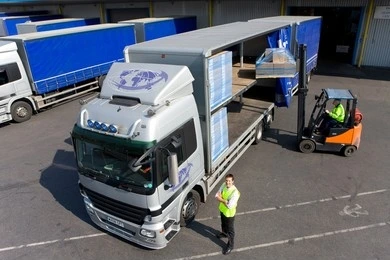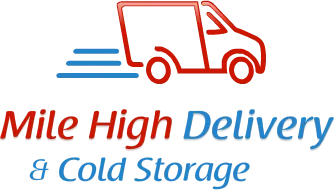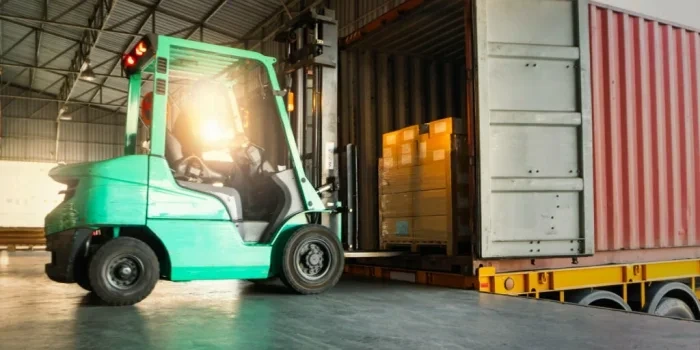In logistics and supply chain management, cross-docking is the process of transferring products directly from inbound trucks or containers to outbound vehicles with little to no storage in between. This strategy has gained popularity among businesses of all sizes and across various industries for good reasons.
In this blog, we will go over the top 5 benefits of cross-docking and why it’s a game-changer in the world of logistics.
1-Reduced Warehousing Costs
One of the most important advantages of cross-docking is the reduction in warehousing costs. Traditional warehousing operations involve storing products for extended periods and adding expenses such as rent, utilities, labor, and equipment maintenance.
Cross-docking, on the other hand, reduces the need for long-term storage. This means less warehouse space is required, which leads to lower overhead costs.
By reducing the amount of time products spend in storage, companies can also cut down on inventory carrying costs, including insurance, security, and depreciation. This frees up capital that can be invested in other areas of the business, such as marketing, research, or expansion.
In addition, reduced warehousing costs contribute to a more sustainable and environmentally friendly supply chain, as less space and energy are needed to manage products.
2-Improved Inventory Management
Cross-docking allows companies to maintain a tighter control over their stock levels and minimize overstock or stockouts. Since products are moved quickly from the receiving area to the outbound vehicles, there is better coordination between supply and demand. This, in turn, helps in reduced inventory, which is not only cost-effective but also improves overall efficiency.
With real-time data and a better understanding of their supply chain, companies can make more informed decisions regarding their inventory levels. As a result, they can reduce the risk of obsolescence and the associated costs.
Improved inventory management also leads to a reduction in carrying costs, as mentioned earlier, and less need for emergency shipments, which can be expensive and disruptive.
3-Faster Delivery and Reduced Lead Times
Cross-docking is all about speed. When products move directly from the inbound vehicle to the outbound vehicle, there is minimal handling and no need for storage. This means reduced lead times, which is a huge advantage in today’s fast-paced business environment. Customers increasingly expect quicker delivery times, and cross-docking allows companies to meet these expectations.
Faster delivery can be a competitive advantage, helping businesses win and retain customers. It also leads to better customer satisfaction and repeat business.
Reduced lead times not only apply to customer deliveries but also to the replenishment of inventory in stores, making it easier to keep shelves stocked with popular items and respond to changing consumer preferences.

4-Lower Labor Costs and Improved Productivity
In a traditional warehousing operation, there is often a need for additional labor to manage and store products. Cross-docking reduces the handling and storage time, which, in turn, reduces the labor required for these tasks.
With fewer touchpoints and less time spent on each product, employees can focus on other value-added tasks, such as quality control, order consolidation, or customer service. This improved productivity can result in a more efficient and cost-effective operation overall.
Additionally, there is a reduced risk of product damage or loss due to reduced handling, which can also contribute to cost savings and higher customer satisfaction.
5-Enhanced Supply Chain Visibility
Cross-docking improves supply chain visibility in several ways. First, because products move quickly through the cross-docking facility, companies have real-time data on inventory levels and order status. This enables better tracking of products and the ability to quickly identify and address any issues or bottlenecks in the process.
Second, by streamlining the movement of products, cross-docking simplifies the supply chain, making it easier to manage and control. With a clear view of the supply chain, companies can make more informed decisions regarding routes, shipping methods, and product allocation. This leads to a more responsive supply chain that can adapt to changes in demand or market conditions.
Conclusion
Cross-docking is a logistics strategy that offers numerous benefits to businesses. From reduced warehousing costs to improved inventory management, faster delivery, lower labor costs, and enhanced supply chain visibility, the advantages are clear.
As customer expectations for speed and efficiency continue to rise, cross-docking has become a valuable tool for companies looking to stay competitive and deliver exceptional service.
If your business is seeking ways to streamline its operations and reduce costs, it may be time to explore the benefits of cross-docking and how it can transform your supply chain.
Ready to supercharge your logistics? Start cross-docking today and experience cost savings and faster deliveries with Mile High Delivery & Cold Storage.
Get in touch with our experts for a personalized consultation on Cross Docking Service in Denver, CO!

